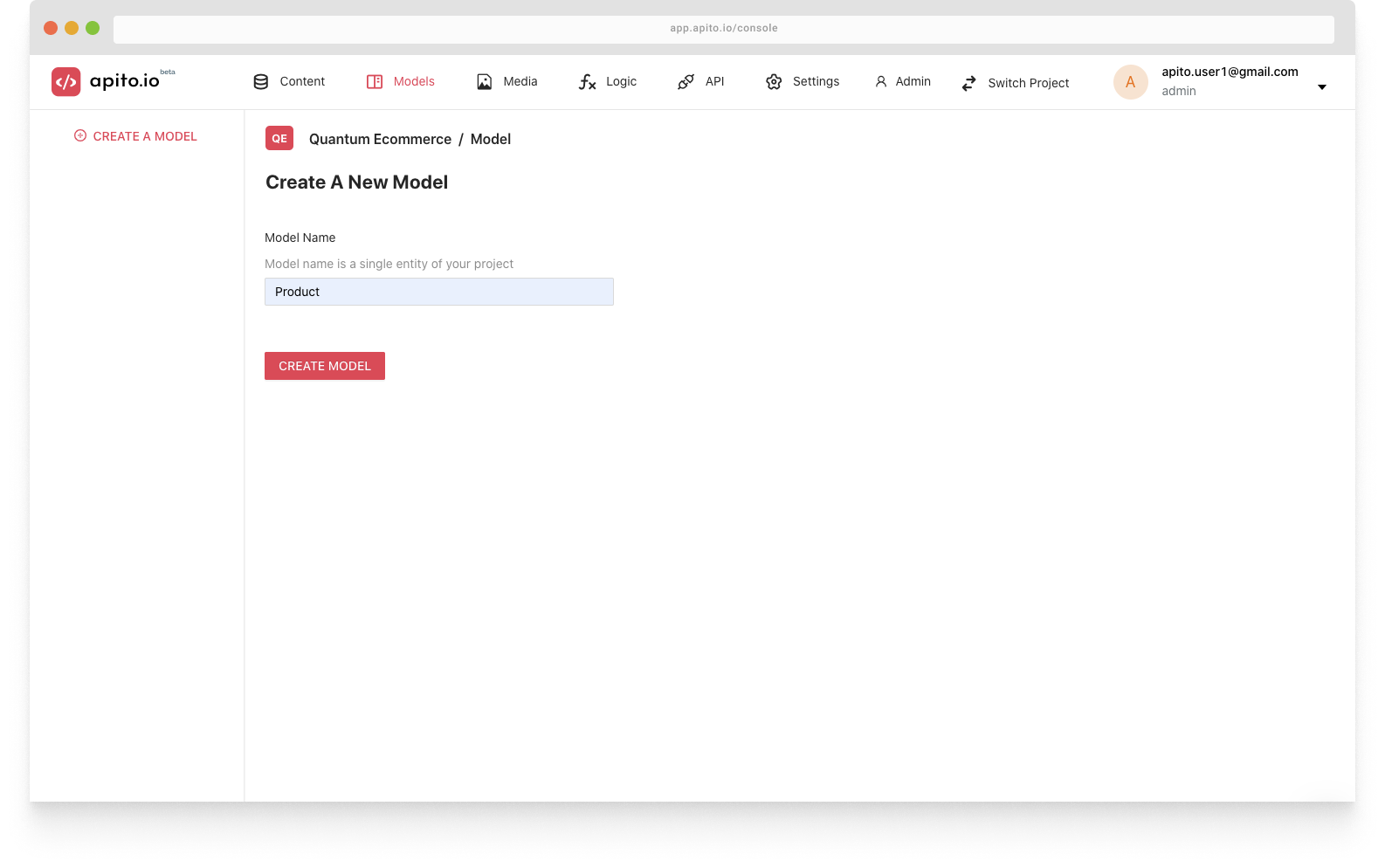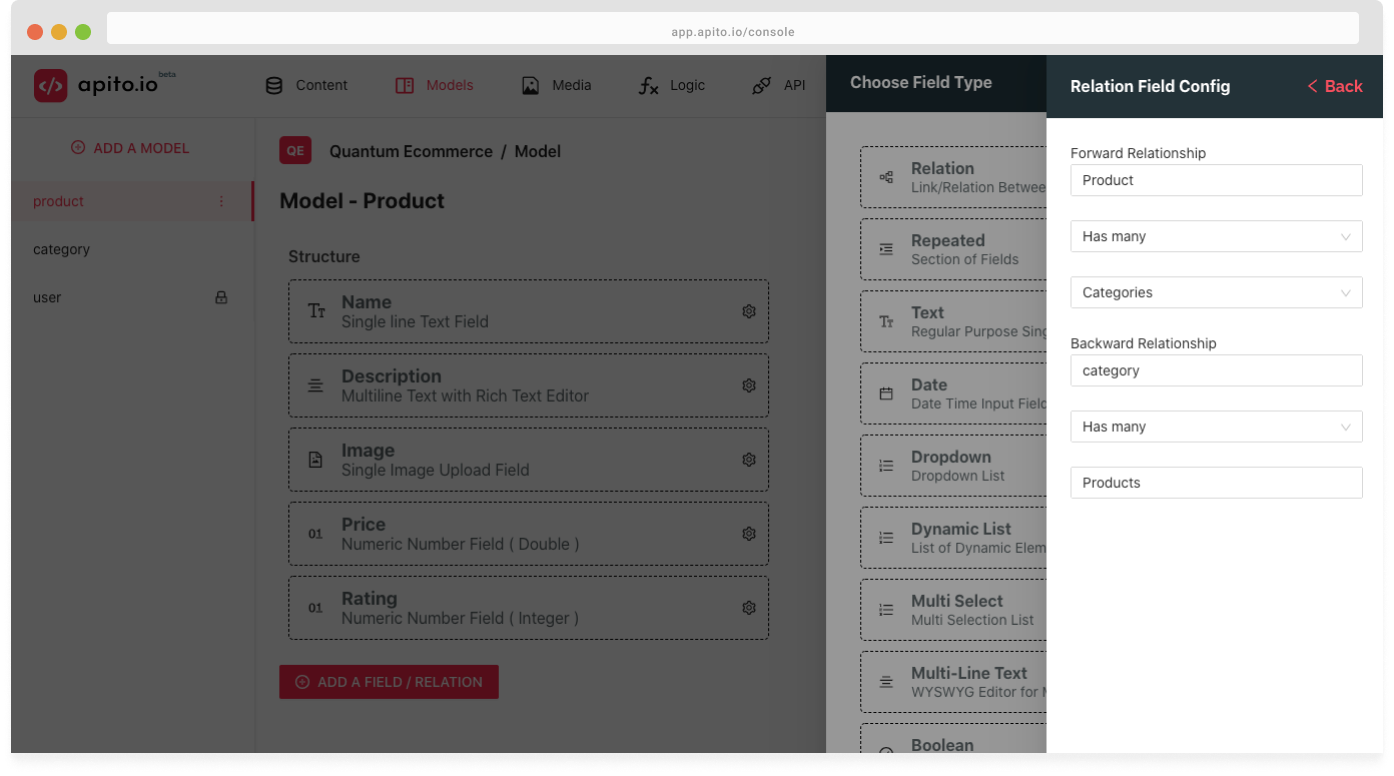Designing Databases of a Project
Database modeling is the most crucial part of your project. Model is the base of what your api will look like.
A model represents an entity of your business logic. For example if you are making an e-commerce website your model name could be, Product, User, Order, Report, Shop etc.
Creating a Model Entity
In order to create model Model first click on the Models from the top navigation bar and click on the button on left side called CREATE A MODEL.
You will see a page like below. Enter your model name and click CREATE MODEL. You will see a success message afterwards

Creating Fields Inside Models
Click on the model from the left side menu in-order to add fields to a model. You will see a button appear in the body of the page called ADD A FIELD / RELATION. Click on that button
to add fields to your model. Choose your relevant field type ( Text, Number, Date, Dynamic List etc) and fill up the necessary fields and click create.
Creating Relations Between Models
In order to add relations between models click on the ADD A FIELD button or choose Relation from the left side of the side panel. You will see options like the picture below.
In order to a relationship betweend models you have to configure Forward and Backward relationship. For example, If you are creating a relations between a products and category,
Forward Relationship for that particular case could be Products Has Many Categories and Backward Relationship could be Categories Has Many Products This is also known as Many-to-Many Relationship
Known As (Optional) field is there if you ever need to overwrite a relationship name in the api. For example if you have two relationship with the same model, lets say, For a project management application a project model could have multiple relationship with user model. One could be an assignee and other could be a reporter. You can use this field to assign different name to your relation. Or else you cant have two different relationship with the same model.
